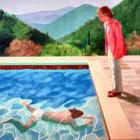This collection brings together some of this much-loved writer's prose work. In it, Oscar Wilde touches on a wide range of topics as only he can. He discusses the decay of lying, the critic as artist, and the truth of masks. He provides criticism of productions of works of Shakespeare and other theatrical concerns, such as stage scenery, stage morals, and "plays that are meant to be read, not to be acted." He also devotes his attention to women's issues, such as novels and stories written by women and women's achievements. Taken together, readers will discover the incisive wit and unique observations for which Wilde was renowned.OSCAR WILDE (1854-1900) was a celebrated Irish-born playwright, short story writer, poet, and personality in Victorian London. He is best known for his involvement in the aesthetic movement and his only novel, The Picture of Dorian Gray, as well as his many plays, such as Lady Windermere's Fan, The Importance of Being Ernest, A Woman of No Importance, An Ideal Husband, and Salom . During his imprisonment for gross indecency, he wrote De Profundis, and later, The Ballad of Reading Gao.

